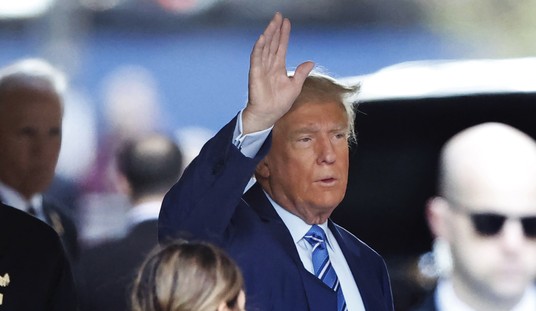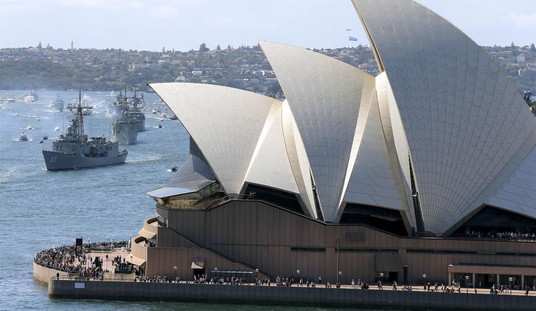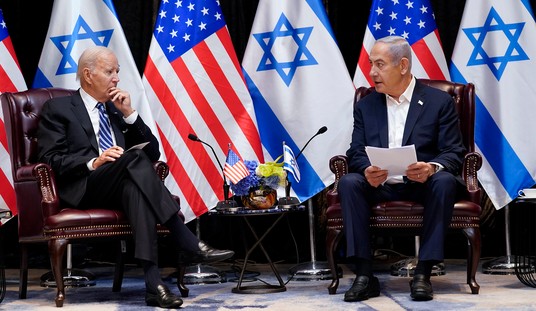My headline doesn’t fully capture what this new ProPublica article conveys. In part that’s because the article is long and has a lot to say about policing in various cities. It’s also because the piece doesn’t seem terribly clear about what it is trying to say. And some of what it does say about recent events in some cities is clearly wrong which makes it very difficult to work out any sort of clear takeaway from this. But stick with me and I’ll do my best to make sense of it.
Let’s start with the subhead which is probably as close to a summary as anyone can get: “In cities across the country, leaders face a phenomenon encountered in Baltimore and Chicago: officers slowing their work in the wake of high-profile episodes of police violence. Reporter Alec MacGillis asks: Will the result be different this time?”
The idea, based on one working paper, is that under certain specific circumstances police officers tend to pull back and that can result in a spike of violent crime. The big factors identified in the paper come down to two factors. First, if there’s a viral incident of police violence, i.e. the death of Mike Brown or Freddie Gray. Second, if that viral incident results in a federal investigation (which often leads to a consent decree). Only when both of those things happen at once do police tend to pull back and does violent crime go up:
A June working paper by Roland Fryer, a research associate at the National Bureau of Economic Research, and Tanaya Devi found that in most cities where police have been under federal investigations in recent decades, a step that often leads to consent decrees, rates of violent crime have not increased — just as they didn’t in Seattle.
There was one set of exceptions in the latter study, though. Federal investigations and de-policing did correlate with a sharp rise in violent crime in cities that had experienced what the study referred to as “viral” incidents: a high-profile, highly controversial instance of police using deadly force against a civilian — precisely what several cities are contending with today…
In their paper, Fryer and Devi note that spikes in violence were not observed in cities that had a viral incident but no ensuing federal investigation, such as North Charleston, South Carolina, following the 2015 police shooting of Walter Scott as he ran from an officer. In those cases, Fryer said in an interview, police seem able to compartmentalize the criticism of the incident, rather than see it as an indictment of the entire force. “If the police feel like the management has their back, which is what they tend to feel if there’s a viral incident and no investigation, then they continue on,” Fryer said.
Fryer said he was also struck to find that investigations not sparked by viral incidents also did not produce spikes in violent crime. But something about the combination of the two — a viral incident leading to an investigation — seemed to lead to police pullbacks and higher rates of violence.
I don’t know how they frame it in their working paper but what they seem to be pointing to is Black Lives Matter, i.e. when an individual incident of police violence becomes a cause celebre and that leads to an investigation and generalized condemnation of police, the police pull back and violence goes up. But the article anonymously quotes several police officers who suggest that the reasons this happens are pretty rational:
One veteran Baltimore police officer said that the 2015 pullback was the result of almost instantaneous demoralization that spread across the department. Officers resented the lack of official direction and protective equipment during the riots, he said, and the charges against the six officers involved in Gray’s arrest, which the Baltimore state’s attorney, Marilyn Mosby, had delivered in a ringing tone from the steps of the city’s War Memorial Building. The resentment was exacerbated by the fact that Mosby’s own office had recently requested heightened enforcement in exactly the area where Gray was arrested.
“You were responding to calls — if an old lady was being robbed, you were going to stop them. But as far as being very aggressive and doing proactive patrolling of the sort that Mosby had demanded, that was over,” the officer said…
In Baltimore, the pullback has persisted five years later, in an evolved form. The resentment that police harbored over the charges against the six officers has dissipated; none of the cases ended with a conviction. Now, the veteran officer said, the continued decline in arrest rates and proactive-policing levels are driven more by uncertainty over what is allowed under the city’s new consent decree, even after multiple training sessions. Some of the sessions have been useful, the officer said — for instance, on the rules around searches and seizures. But officers are still uncertain about the expanded use-of-force definitions, he said, which include forcible handcuffing, as in Seattle, and about when and how they are allowed to clear crowds from major drug corners, so they often choose to simply drive by them. “The officers are confused. I have no idea what I can do and what I can’t do, and I’ve been an officer for 20 years,” he said. “The good members of the community want us to do our job. But the small number of noisy people who are getting in trouble over and over are out there dictating policy to the detriment of the city.”
The article notes that in Baltimore, the consent decree actually requires the city to hire more officers, putting it completely at odds with the demands being made by current BLM activists who want police defunded and the number of officers cut sharply.
The article frames the killing of George Floyd in Minneapolis as an event that set off police pullbacks in multiple cities. But here some of the analysis of the situation seems badly off base:
During the protests that followed Floyd’s death, Seattle police withdrew from their precinct house in the Capitol Hill neighborhood, allowing the area to become an “autonomous” zone. In the following days, they were slow to respond to several emergency calls in or near the zone, including a shooting inside the area that left a 19-year-old dead and another injured. (The police attributed their slow response to having been impeded by the zone’s occupiers.) Many officers have also refused to uncover their badge numbers, deterring identification.
[Former Seattle Mayor Michael] McGinn has been observing from the sidelines as the city, now under the leadership of Mayor Jenny Durkan, appears to be experiencing its own version of a silent strike protesting the activists and Durkan, who initially said the autonomous zone had a “block-party atmosphere. There’s a lot of evidence that the police today are not fully under control of the mayor. No mayor can admit that, but all evidence seems to suggest that,” McGinn said in July, just before police finally moved to clear the autonomous zone. “They’re engaging in their own version of civil disobedience — showing that they’re the thin blue line and that without them there will be chaos. That’s what they believe and they want to go out there and prove it.”
McGinn has the situation bass ackwards. Police were forced out of the Capitol Hill precinct by rioters who then set up roadblocks to control who could enter the area. Almost immediately, Police Chief Carmen Best expressed anger at having to abandon the precinct and said the decision had not been hers. She repeatedly expressed her eagerness to get back into the building and noted there were significant delays responding to 911 calls because of the disruption. Chief Best even went into the CHAZ and called what was happening “irresponsible.” Meanwhile, Mayor Durkan who had suggested the CHAZ might lead to a “summer of love,” was clearly in to mood to confront the protesters. Her idea of de-escalation eventually resulted in five people shot within a week. Finally, the mayor came to her senses and said enough was enough.
If the police were out of control it was only in the sense that they were straining to engage and deal with the situation while the mayor was muttering about a block party. The CHAZ is simply not a good example of police pulling back. It’s an example of a mayor bending over backwards to appease violent protesters. And that’s a major part of the story that doesn’t get much attention in this piece.
Criminologist Richard Rosenfeld, who recently released a report showing violent crime was on the rise in cities across the country, said the rise in crime can’t be put at the feet of police. There are other dynamics at play in these cities:
“Those are cities where the community’s relationship with police is enormously fraught, and in those situations, people tend to withdraw from the police and take matters into their own hands,” he said. “It’s not just what police are or aren’t doing that could be provoking more incidents. It’s also the community reacting to police brutality.”
Having blamed police for everything else, some are now trying to blame them for their own demoralization in the wake of daily attacks on the profession from many sides. But ultimately it makes little sense to blame police for pulling back when the clarion call of activists, amplified by the media nationwide, is ‘defund police.’ If sustained public condemnation of the police creates a decrease in morale and a rise in violence, then maybe we should stop doing that. If less police activity creates a vacuum that leads to more violence then maybe slashing police budgets isn’t a good idea. In short, maybe we ought to think about how we’re handing the issue of police reform presently before making dramatic changes that could impact these cities for many years to come.








Join the conversation as a VIP Member